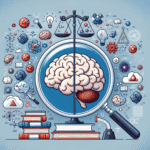
Introduction
In today’s digital age, data is often heralded as the new oil. But unlike oil, raw data is not inherently valuable; it requires skillful refinement to transform it into actionable insights. From Raw Data to Actionable Insight: Mastering Data Analysis Techniques highlights how organizations can harness the power of data to make informed decisions, optimize processes, and drive innovation. Understanding the journey from raw data to actionable insights is not merely a nice-to-have—it’s essential for staying competitive.
Imagine being able to anticipate market trends, improve customer satisfaction, and streamline operations—all from the effective analysis of your data. In this article, we will break down the key techniques for mastering data analysis, delving into concepts, tools, and real-world applications that turn mere statistics into compelling strategies.
Understanding Data: The Foundation of Insights
What is Raw Data?
Raw data refers to unprocessed facts and figures without context. Examples can include customer transactions, sensor readings, or survey responses. While inherently lacking clarity, this data serves as the very foundation upon which actionable insights can be built.
Importance of Transforming Raw Data
The transformation process involves filtering, cleaning, and analyzing data to reveal trends, patterns, and anomalies. This progression is critical: companies that harness this transformation can drive profitability and enhance customer experiences.
Key Data Analysis Techniques
1. Data Cleaning
Before any insightful analysis can occur, raw data must be cleaned. This involves identifying and correcting errors, such as duplicates or missing values. Data quality directly influences the reliability of insights gained.
Example: Consider a retail company that collects transaction data. If the input format varies (some transactions in USD, others in EUR), the first step is standardization.
Table 1: Common Data Quality Issues and Solutions
| Issue | Solution |
|---|---|
| Duplicates | Remove duplicates based on unique identifiers |
| Missing Values | Impute or discard missing records |
| Inconsistent Formats | Standardize formats across the dataset |
2. Exploratory Data Analysis (EDA)
After cleaning, Exploratory Data Analysis (EDA) is performed to uncover initial insights. This involves using statistical graphics, plots, and information tables to visualize data distributions and relationships.
Case Study: A healthcare provider used EDA to analyze patient readmission rates. By visualizing the data, they discovered that patients with specific comorbidities tended to have higher readmission rates. This insight allowed them to tailor post-discharge follow-up programs effectively.
3. Statistical Analysis
Statistical methods like regression analysis and hypothesis testing enable organizations to draw meaningful conclusions from data. These techniques facilitate predictions and help confirm or refute initial hypotheses based on collected data.
4. Data Visualization
The human brain processes visuals faster than text, making data visualization a powerful tool. By creating charts, graphs, and dashboards, organizations can present complex data in an easily digestible format, allowing stakeholders to grasp insights quickly.
Example: A financial services company used interactive dashboards to visualize real-time trading trends, enabling traders to act proactively rather than reactively.
Chart 1: Impact of Data Visualization on Decision-Making Speed
Advanced Analytics Techniques
Predictive Analytics
Moving beyond historical data, predictive analytics employs machine learning algorithms to forecast future events. This can help organizations develop proactive strategies based on potential future trends.
Prescriptive Analytics
Going a step further, prescriptive analytics suggests actions based on predictive analyses, often using simulation techniques. For instance, companies can model different scenarios—such as changes in pricing or market conditions—to determine the best course of action.
Integrating Data Analysis into Organizational Culture
A robust data-driven culture is vital for leveraging data effectively. Here are steps for fostering such a culture:
- Educate Employees: Conduct training sessions on data interpretation and analytic tools.
- Promote Collaboration: Encourage cross-functional teams to share insights and work together on data projects.
- Leverage Technology: Invest in tools that facilitate data analysis and visualization.
Real-World Applications of Data Analysis Techniques
Case Study: Retail Marketing Optimization
A major retail chain utilized data analysis techniques to revamp its marketing strategies. By analyzing purchasing patterns, they identified peak shopping times and tailored advertisements accordingly. This data-driven approach led to an increase in sales by 15% over the holiday season.
Case Study: Enhancing Customer Experience in Banking
A banking institution implemented predictive analytics to understand customer behavior better. By analyzing account holder data, they were able to target offers and services more effectively, resulting in a 25% increase in customer engagement rates.
Practical Steps to Master Data Analysis
- Identify Objectives: Clearly define what business questions you aim to answer with data.
- Gather and Clean Data: Start with reliable data sources and prioritize data cleaning.
- Explore and Analyze: Use EDA techniques to uncover initial insights before diving deeper into statistical analyses.
- Visualize and Communicate: Utilize data visualization tools to present findings, ensuring they resonate with stakeholders.
- Iterate: Data analysis is not a one-off task; continuously refine and update your analyses based on new data and insights.
Conclusion
Transforming raw data to actionable insights is a journey that requires a strategic approach, a deep understanding of various data analysis techniques, and a culture that embraces data-driven decision-making. By mastering these techniques, organizations can make smarter choices that enhance efficiency, improve customer satisfaction, and drive growth.
The importance of this mastery cannot be overstated. As organizations increasingly rely on data to guide their strategies, those that excel will not only navigate the challenges of today but will also thrive in the opportunities of tomorrow.
FAQs
1. What is raw data?
Raw data is unprocessed information collected for analysis. It lacks context or structure, making it essential for thorough cleaning and processing before insights can be derived.
2. Why is data cleaning important?
Data cleaning is vital to ensure the accuracy and reliability of analysis. Poor data quality can lead to misleading insights, affecting decision-making.
3. What tools are commonly used for data visualization?
Popular data visualization tools include Tableau, Microsoft Power BI, and Google Data Studio, among others. These tools help translate complex datasets into clear visual representations.
4. How can predictive analytics benefit my business?
Predictive analytics allows businesses to forecast future trends based on historical data, enabling proactive decision-making and targeted strategies, ultimately enhancing performance.
5. What steps should I take to start a data-driven culture?
Start by educating employees on data use, promoting collaboration across departments, and investing in analytics tools that empower decision-makers at all levels.
From Raw Data to Actionable Insight: Mastering Data Analysis Techniques is not just about crunching numbers—it’s about fostering a culture of curiosity and innovation. As you implement these techniques, embrace the unique opportunities that data presents and become a leader in your field.














